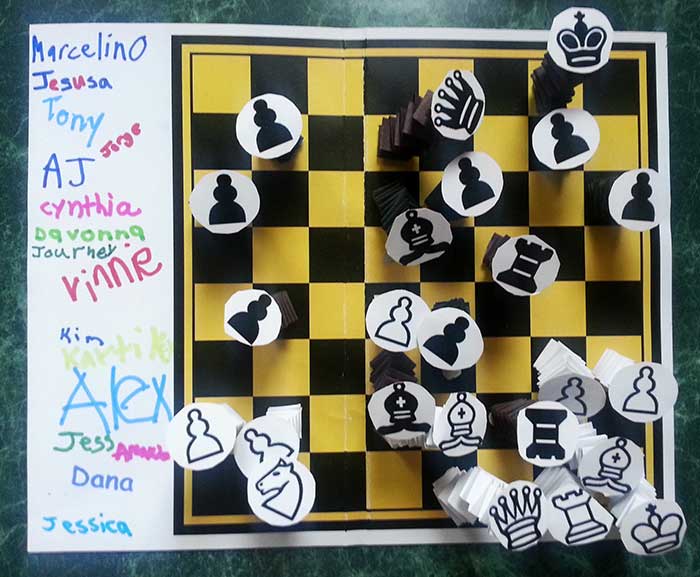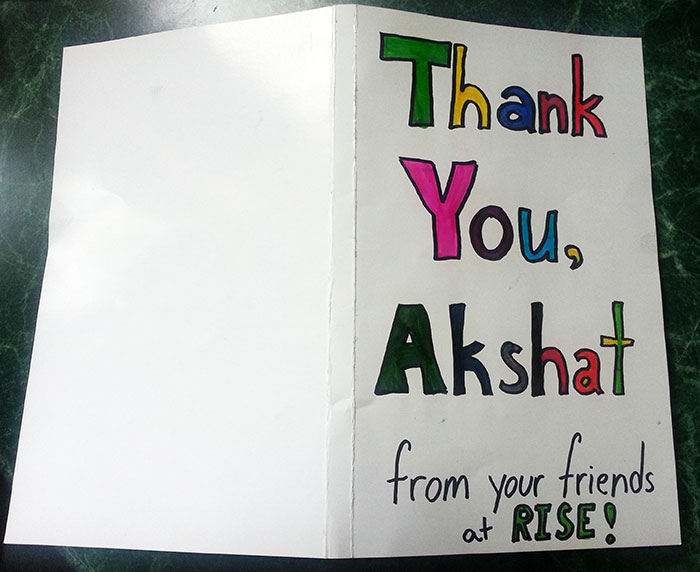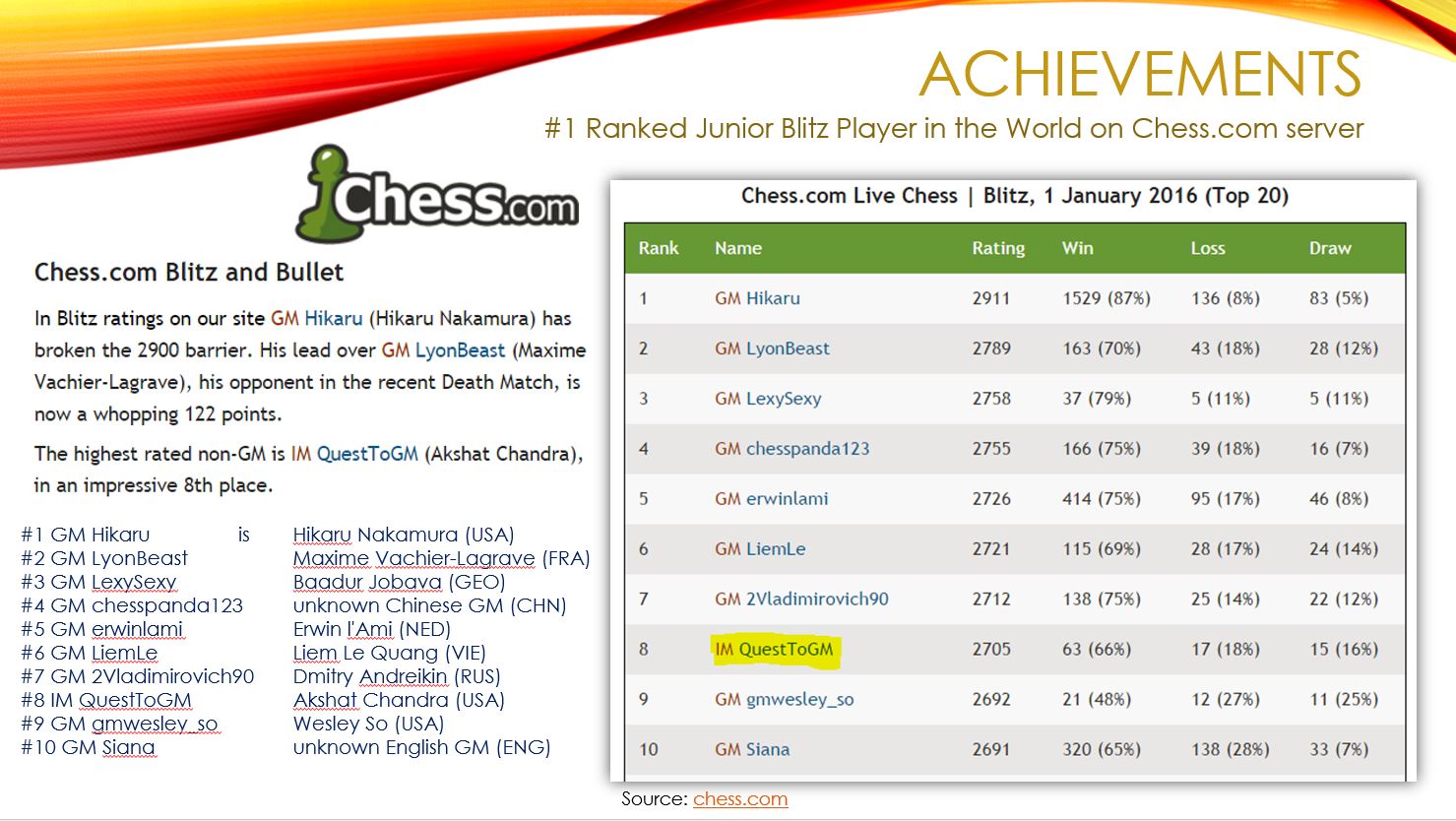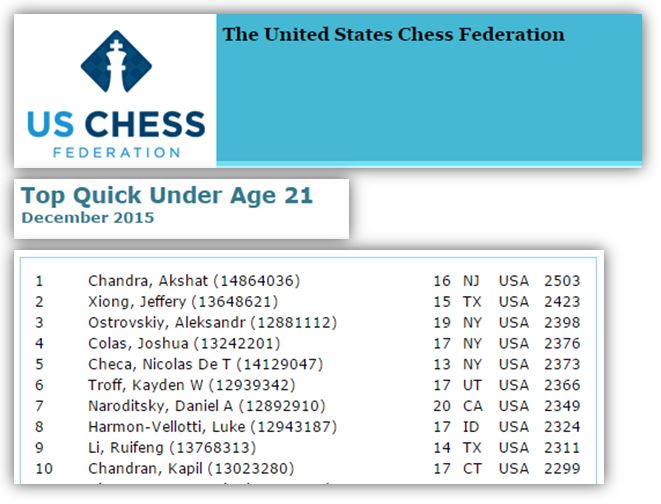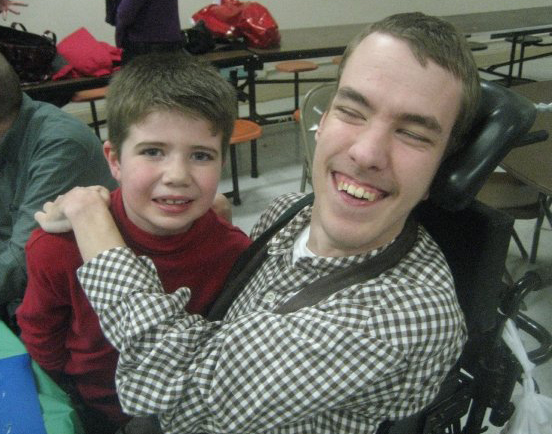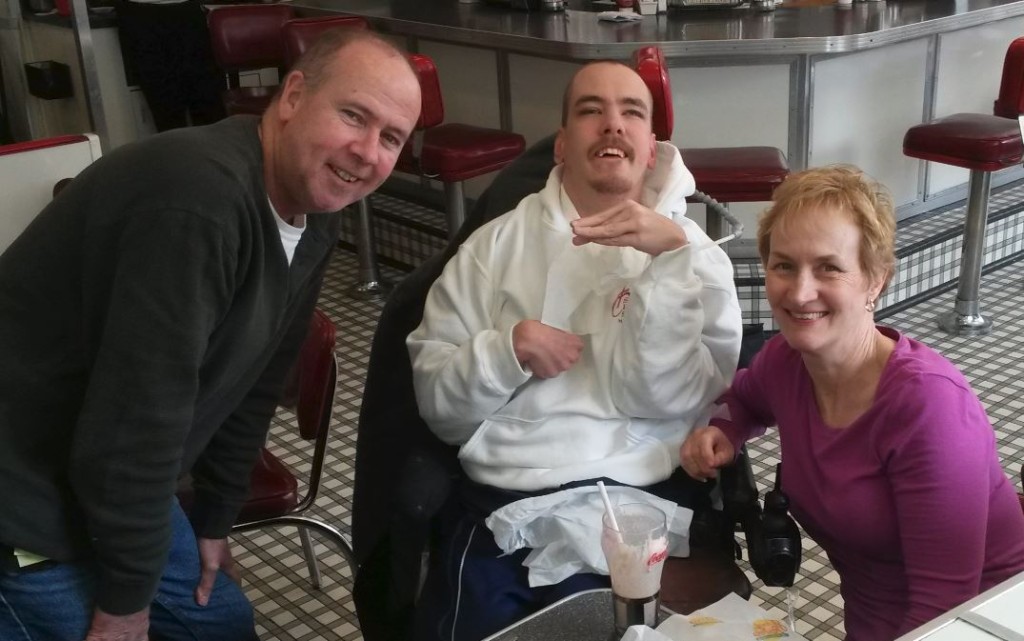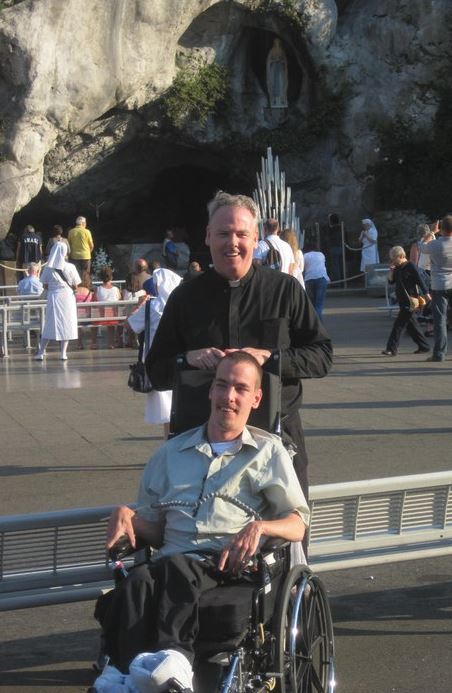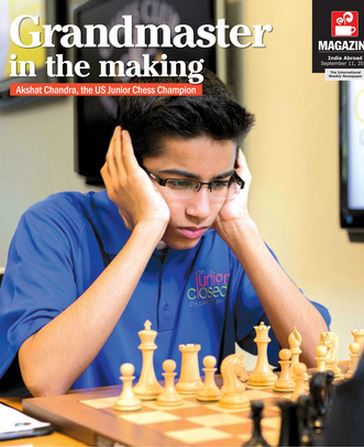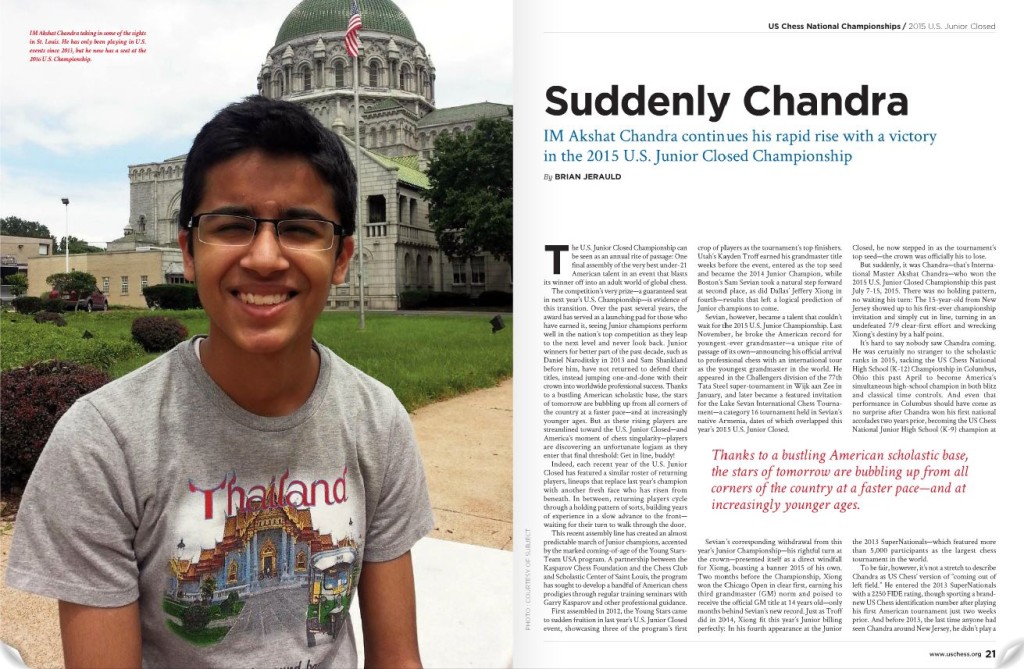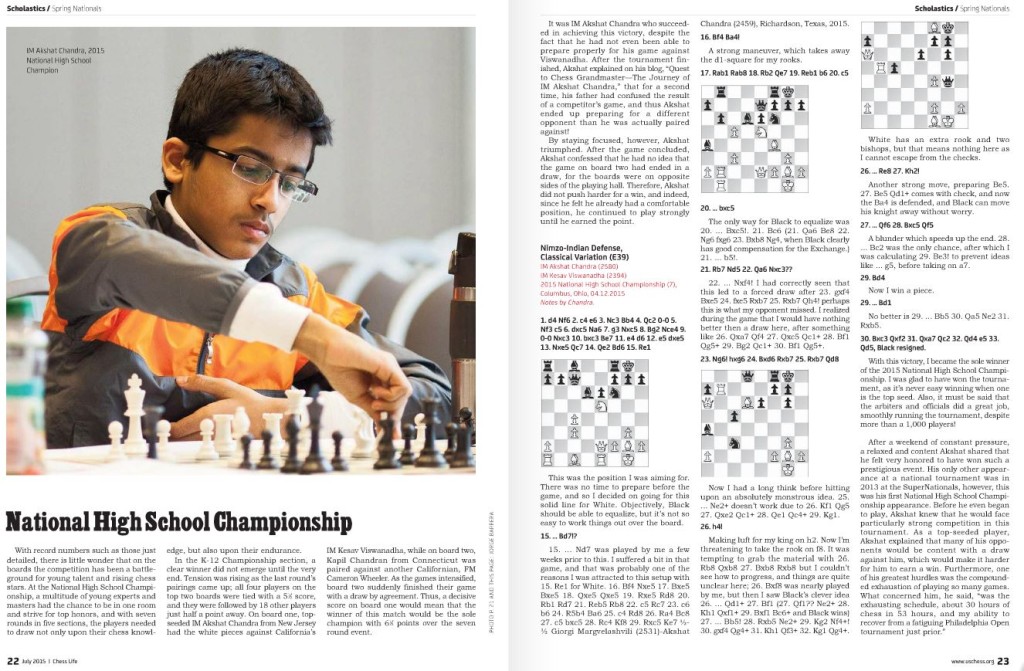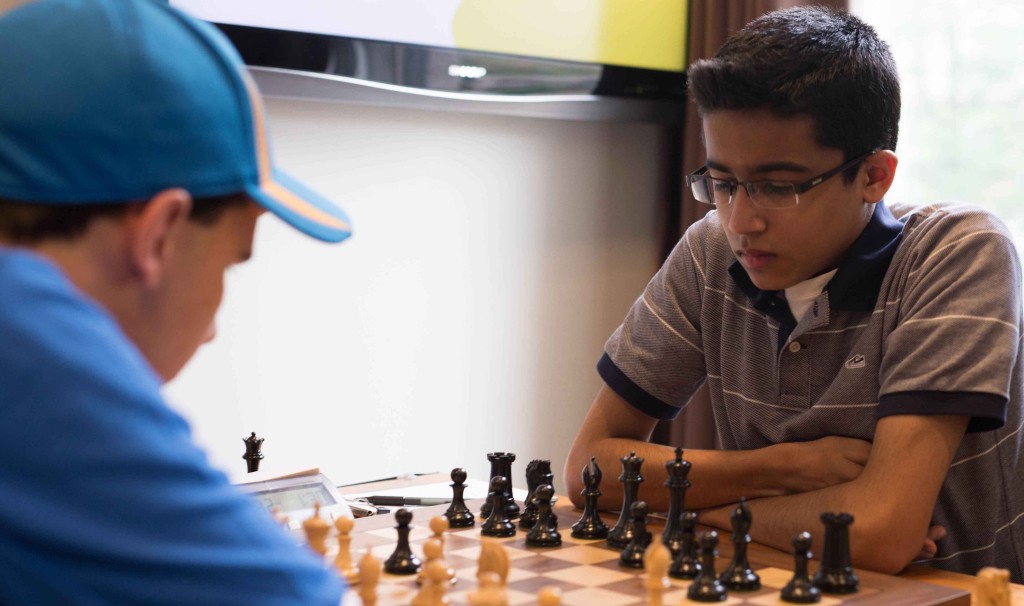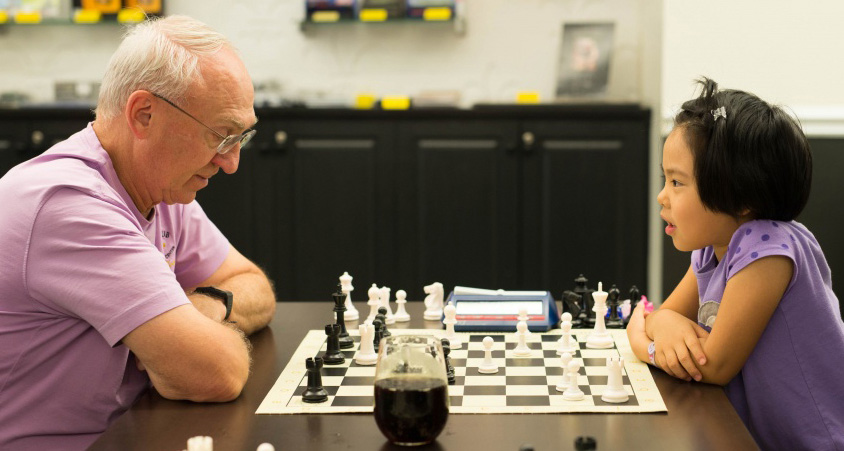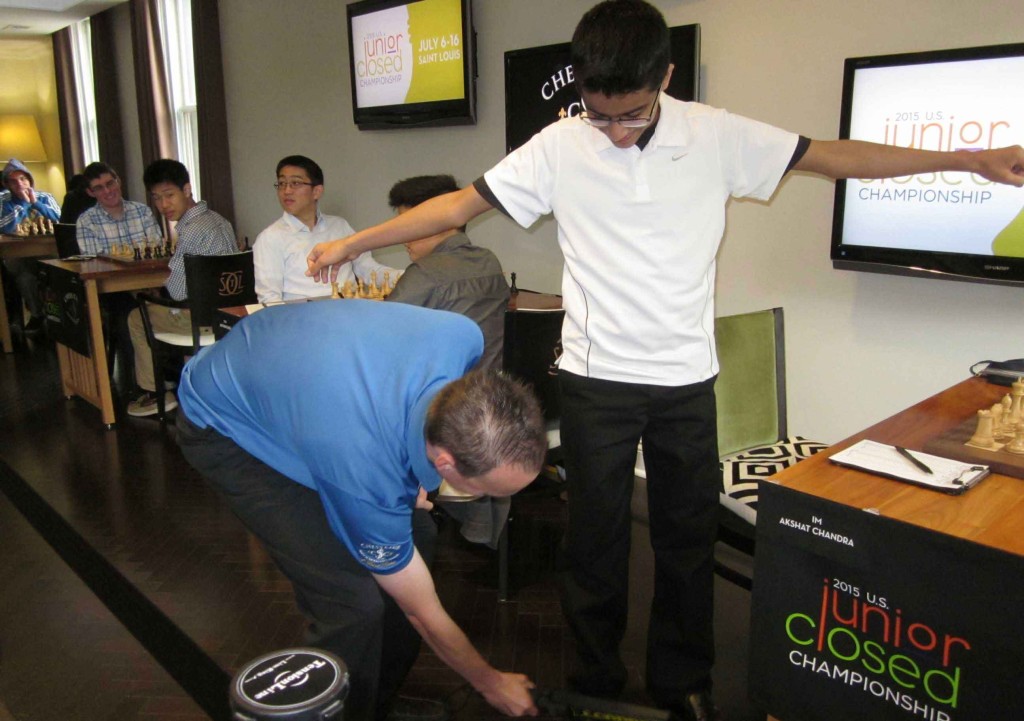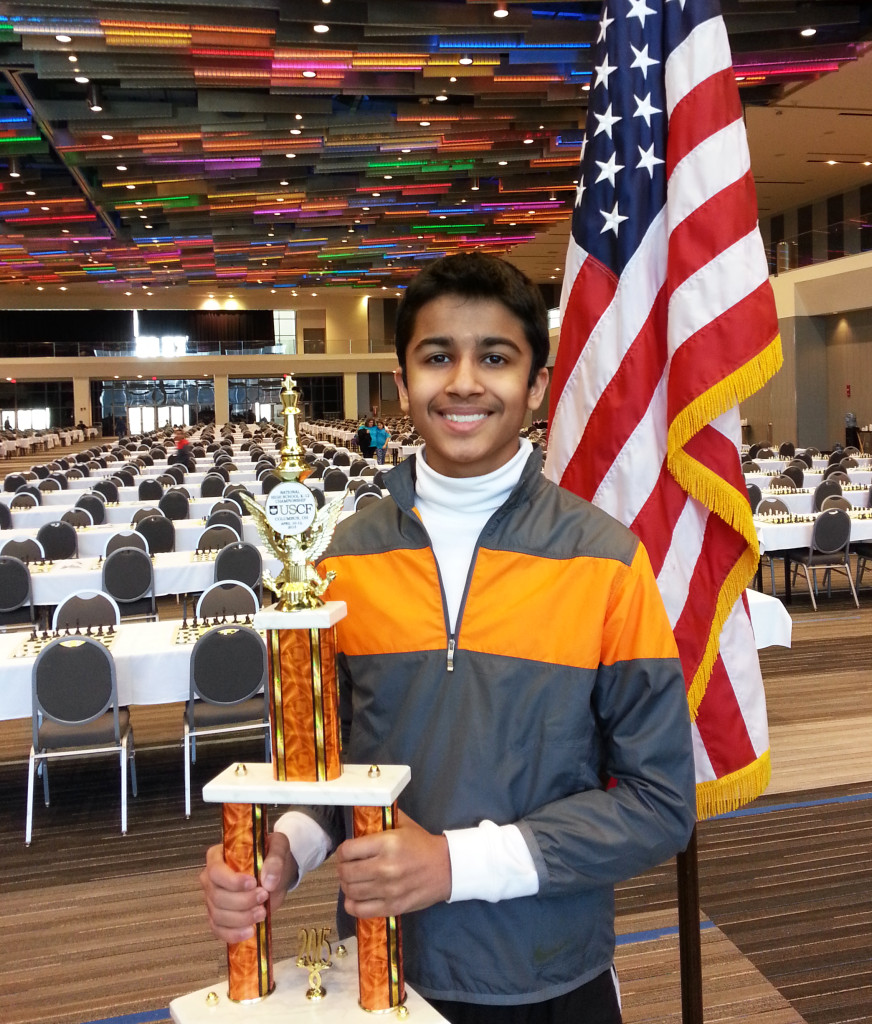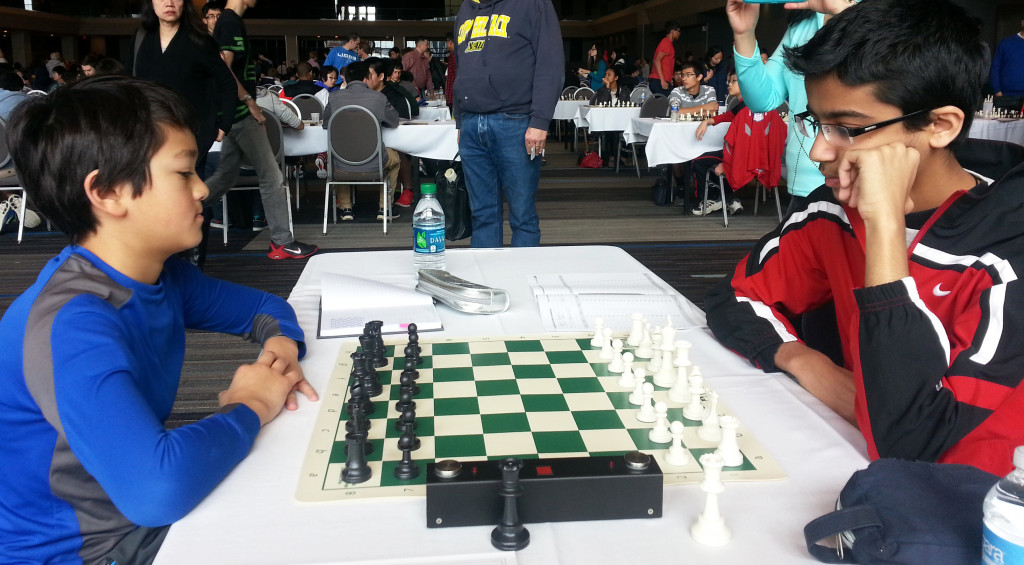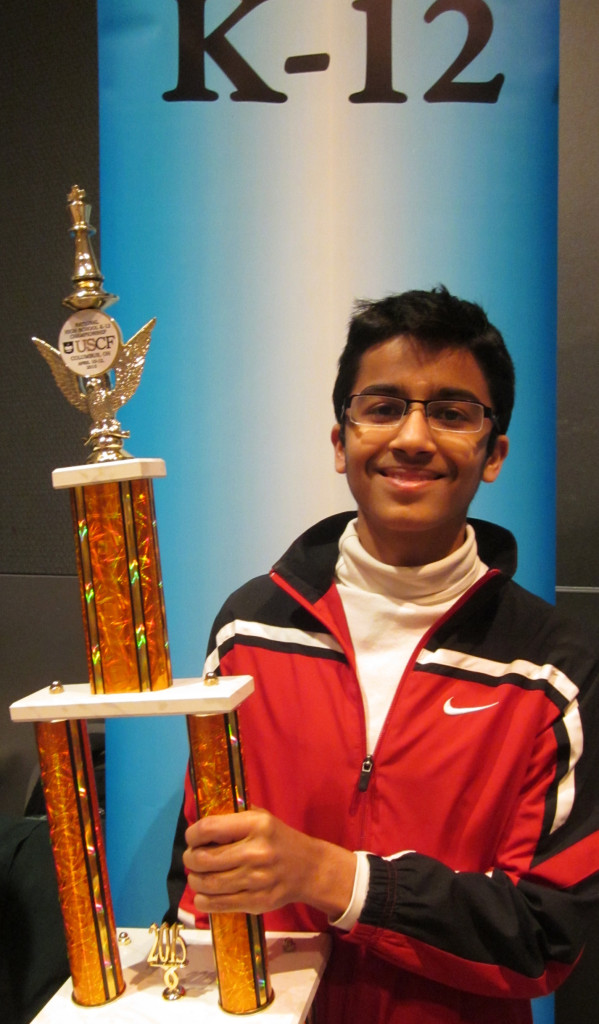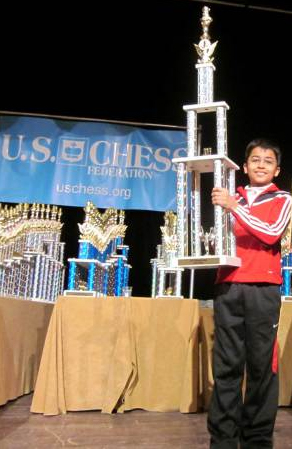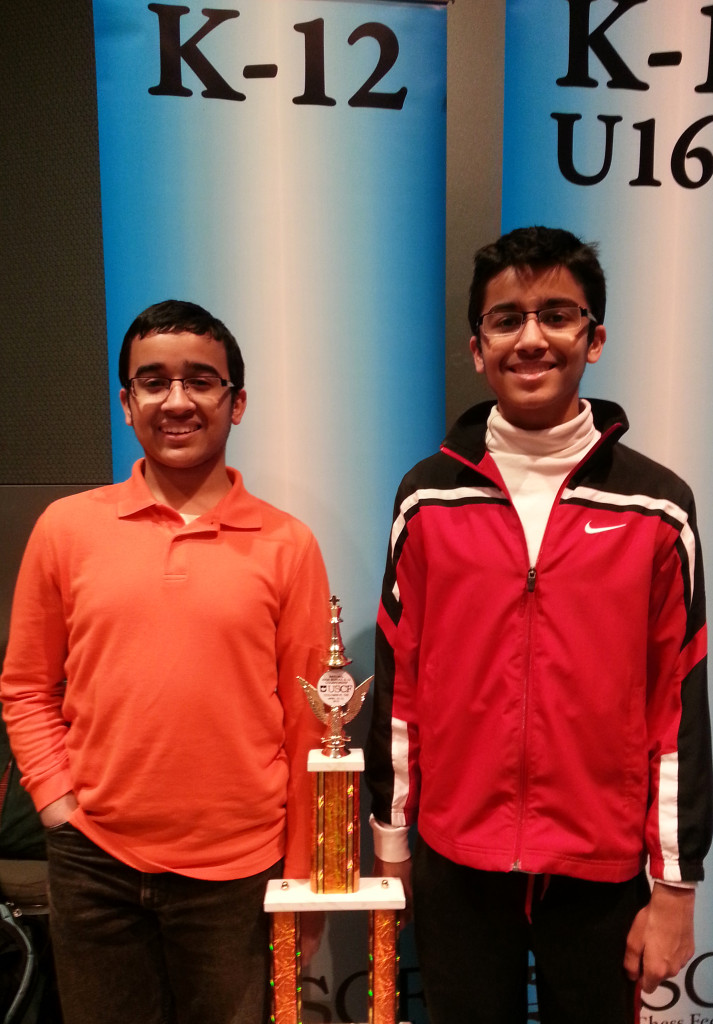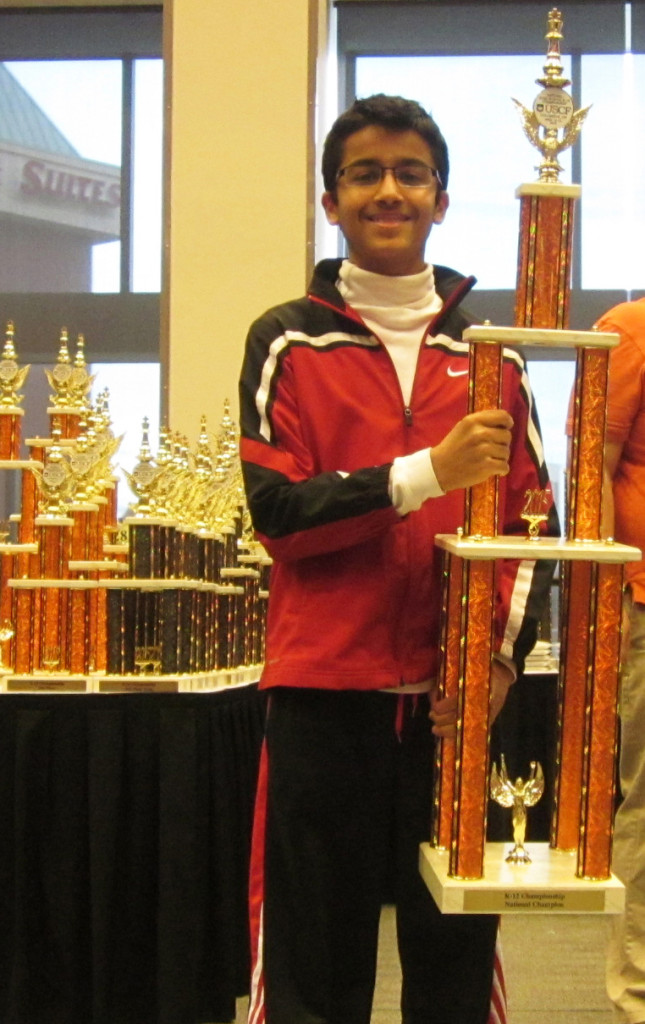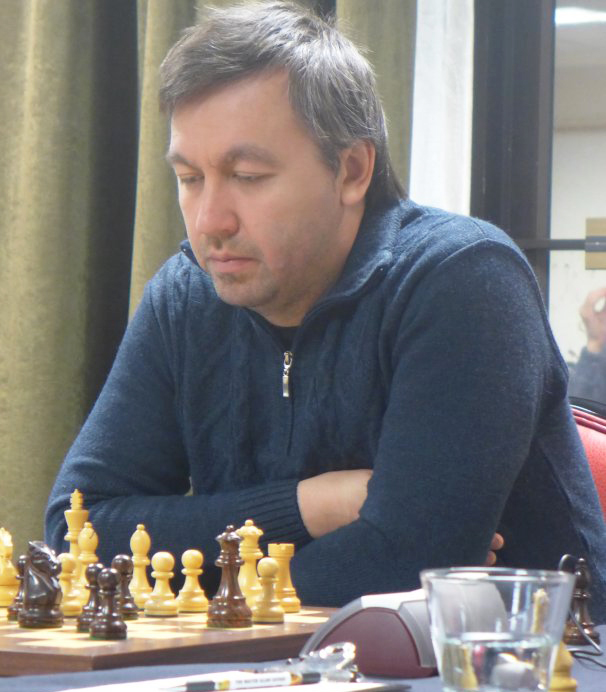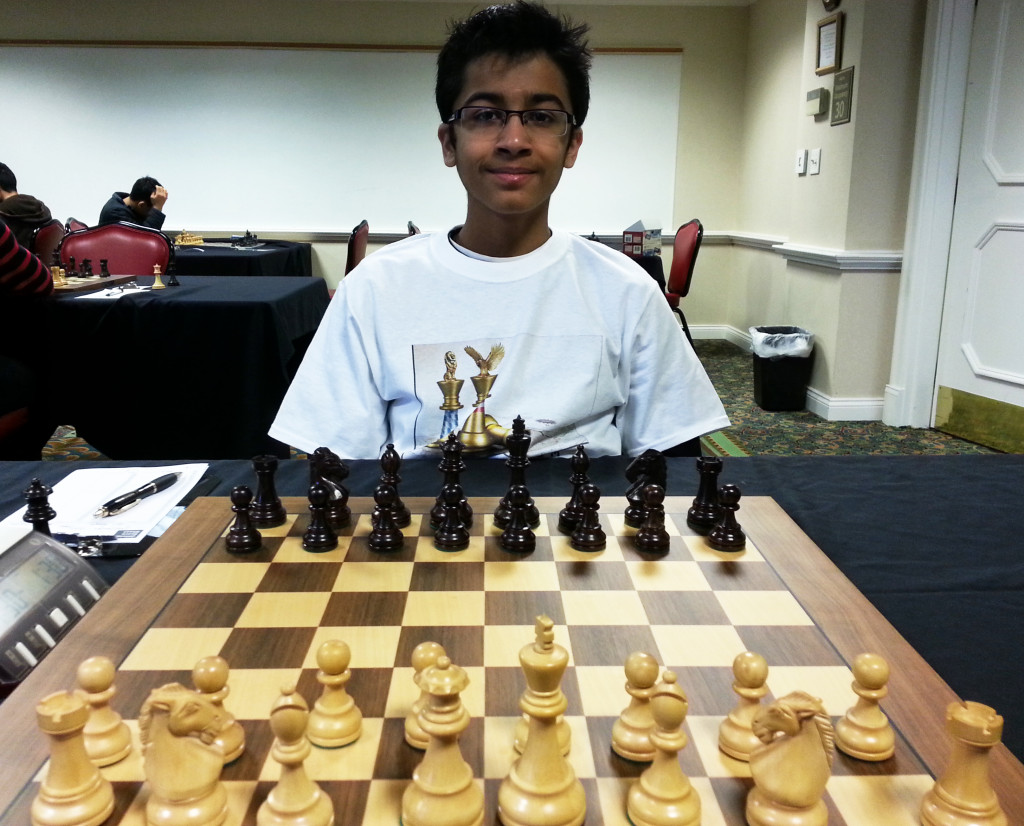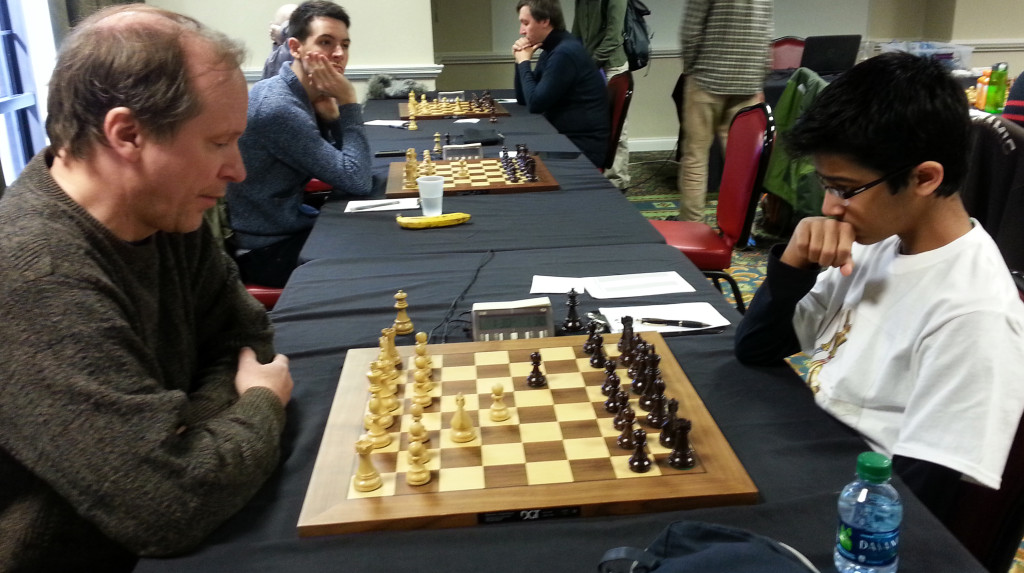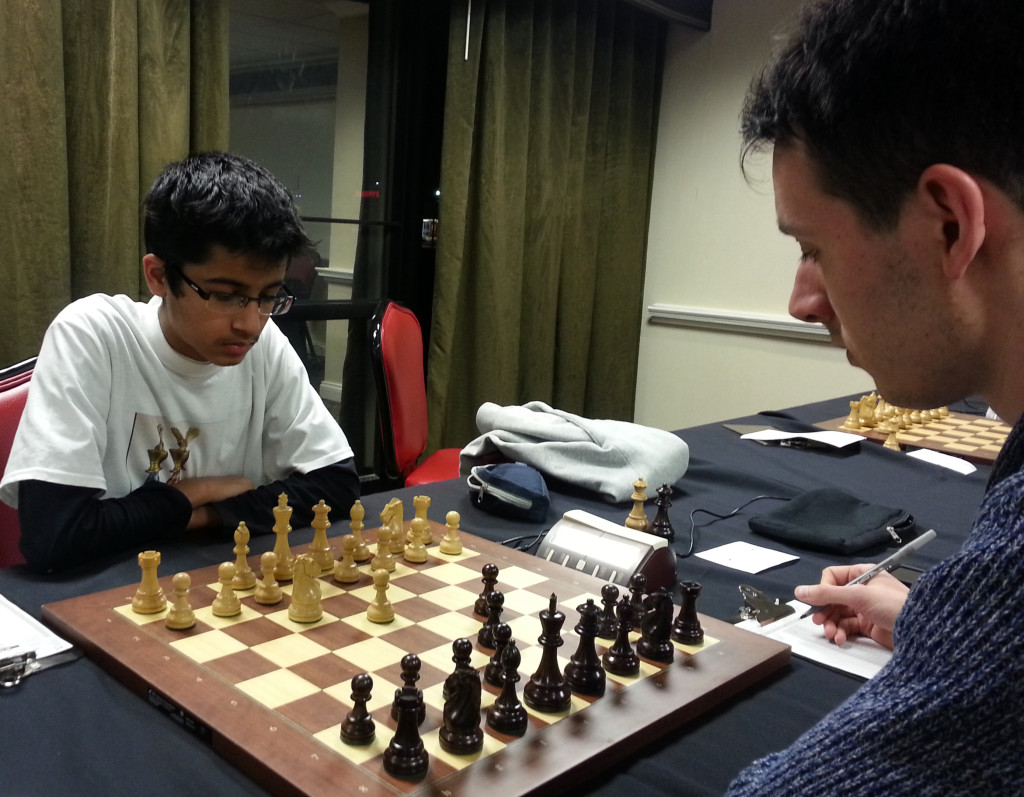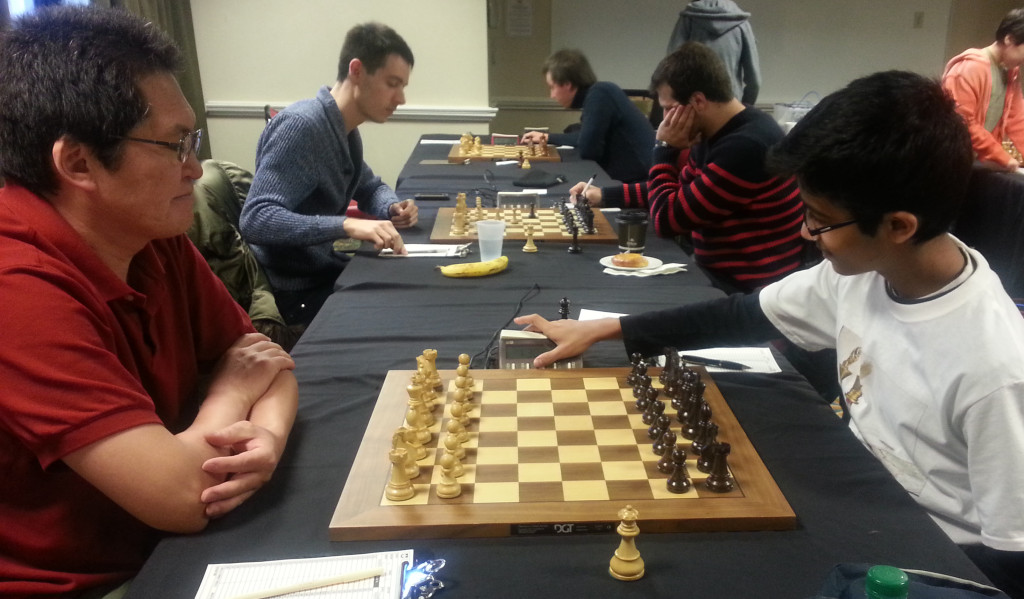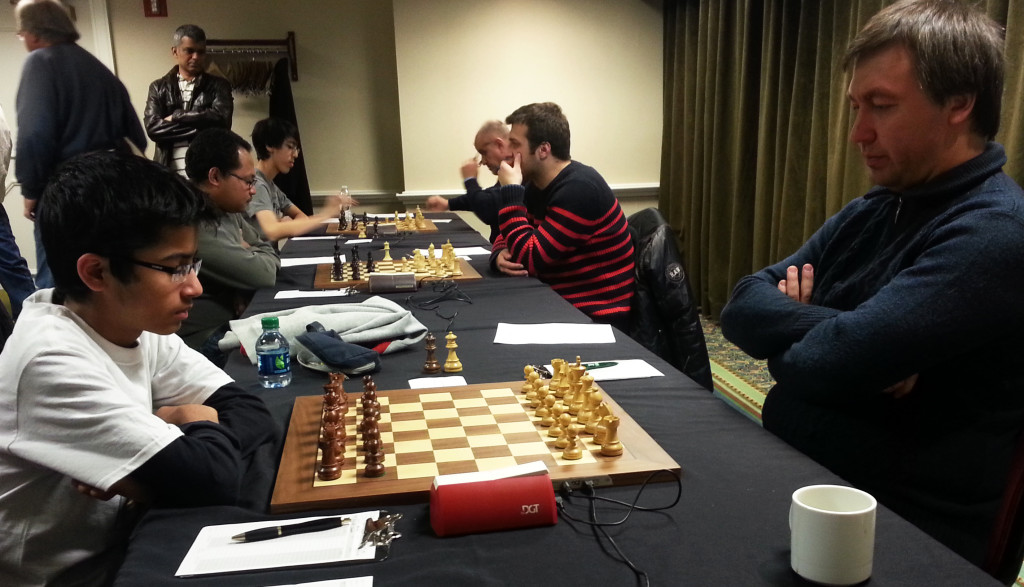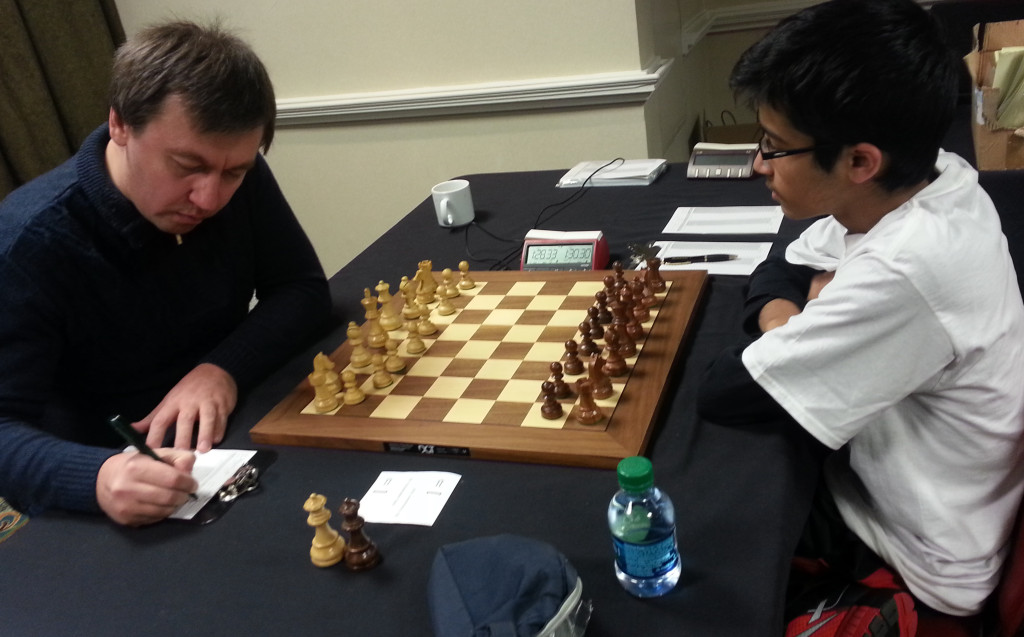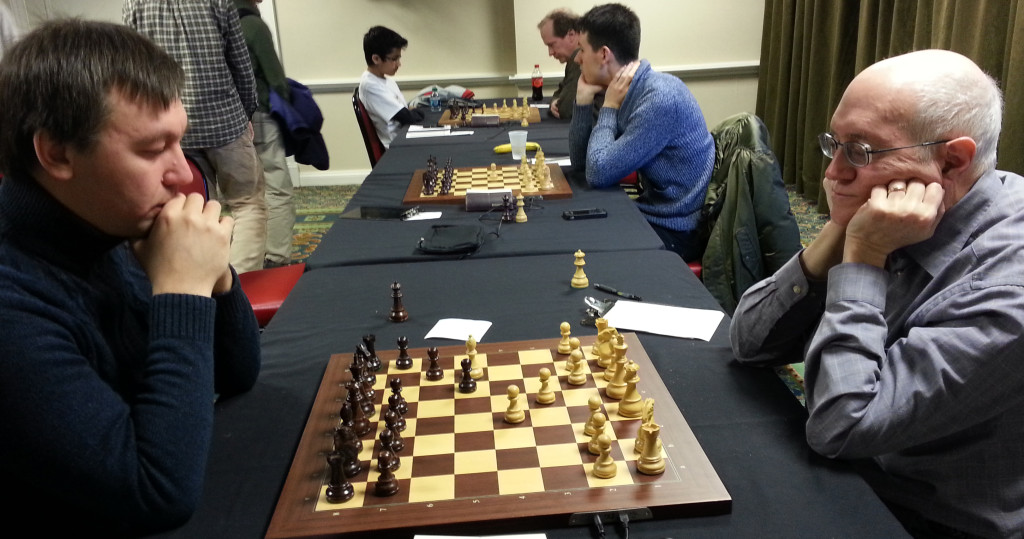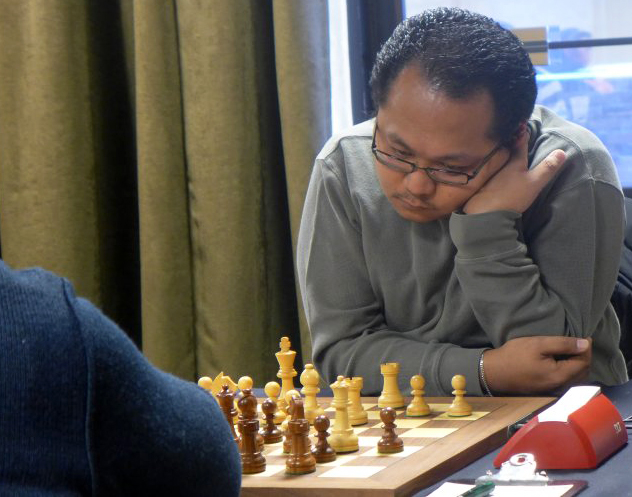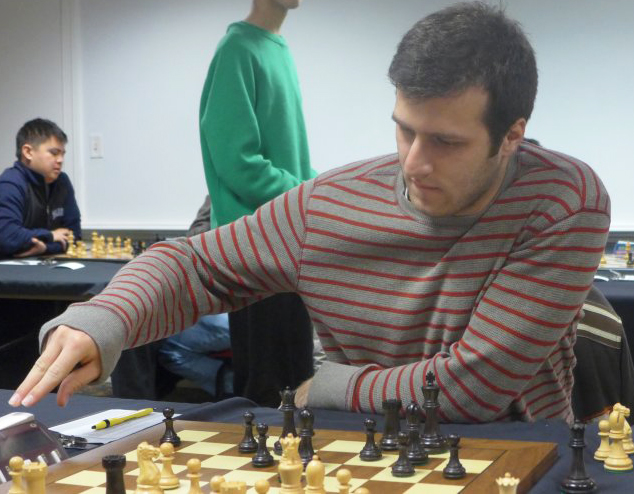SEE IT! Our old man loses to a 16-year-old chess master
Nothing makes you feel dumber than losing at chess to a 16 year old.
I have a good excuse, of course: I’m lousy at chess.
And here’s an even better excuse: I was playing Akshat Chandra, the reigning American junior champ, who is heading today to St. Louis to compete in the U.S. Championship.
This kid is 90 pounds soaking wet. And he’s a nerdy teenager. And given that there’s no better tabloid trope than the old fat guy competing against the young upstart, I was happy to pretend that I could take him.
But first, I went heavy with Ali-esque intimidation, reading Chandra this poem before we started:
This ain’t no Thrilla in Manila.
It’s more like chess doom in the newsroom
I’m gonna take down Akshat Chandra
Like disease defeats cell mitochondr’a
He may think he’s a Boris Spassky
But my moves are smoother than French Chablis.
Unlike Muhammad Ali, of course, I float like a butterfly, but sting like a flea.

Daily News legend Gersh Kuntzman makes a move against U.S. junior chess champion Akshat Chandra in a friendly match at the News’ Lower Manhattan offices. Kuntzman lost the match, but won something greater.
The match was pretty much done in about six moves, when I made my big mistake — taking his pawn. (Check out the exact moment at about :40 in the video above.) Who knew that taking an opponent’s piece was a bad idea?
“That was when I knew it was over,” Chandra said. “You took the pawn, but in doing so, moved your pawn outside the center. You should have bolstered your strength rather than dilute it.”
What he means is that I shouldn’t have done that.

Chandra did have to think, at least once, during the match
Another bad move? Anyone who ever read “Bobby Fischer Teaches Chess,” which I read probably 150 times when I was 14, knows you have to castle the king and the rook. But I did it on the wrong side.
“You castled on your queen’s side, which left your position even more unstable and underdeveloped,” Chandra said, using words that mean something different in chess than they do in English. “You should have developed your king’s side.”
He then added, diplomatically, “That was perhaps not the best idea for this situation.”
I lasted roughly two dozen more moves — and even captured both of Chandra’s rooks and bishops — but the kid was toying with me. He check-mated me with little more than a queen and a pawn — which to a chess geek, is the equivalent of being sent to the emergency room after having a pillow fight with Pee Wee Herman.
At least I lasted far longer than the so-called experts thought I would. Before the match, I had called chess writer David Shenk, author of “The Immortal Game,” a seminal history of the sport, for advice. He had none.
Frankly, he predicted I’d only last nine moves.
“There is no way to beat him,” Shenk said. “There is no way to even draw with him. It’s like you’re playing one on one with that guy from the Warriors, what’s his name, Steph Curry.”

Kuntzman graciously accepts defeat
Shenk’s only advice, “Brush up on your chess for seven years, playing every day against Deep Blue, and then you’ll be in a position to hold off this kid for 11 moves.”
Or I could just be Akshat Chandra.
This kid was your average American boy until he was 9 and his family moved to India, where he couldn’t play the “normal” games he loved: baseball, basketball and football.
So he took up chess — and was so good that he racked up a near-grandmaster rating in just four years. Now he’s in the top 30 players in the entire United States, and has a genuine chance at the nationals that run through April 30.
Ever gracious, he said defeating me was something akin to the best preparation he could possibly have.
“You made me laugh,” he said. “That’s relaxing.”
Follow the action from the U.S. national chess championship, live from the Chess Club and Scholastic Center of Saint Louis at www.uschesschamps.com

